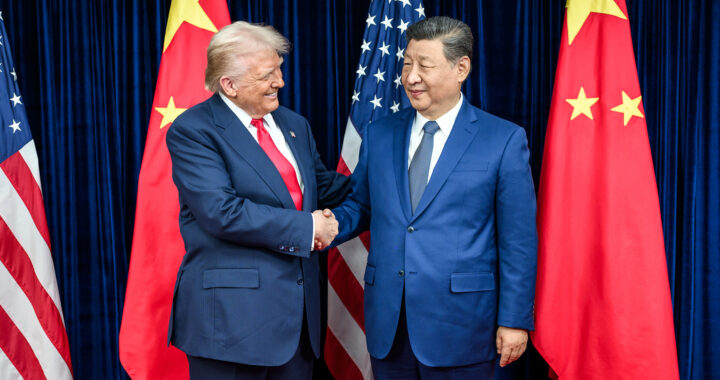U.S. President Donald Trump met with Chinese President Xi Jinping in Busan on October 30, 2025, for their first face-to-face discussion in six years. This marks a significant diplomatic reset. Trump then announced that U.S. tariffs on Chinese goods would be lowered to 47 percent from roughly 57 percent as part of a new agreement.
The tariff rollback was driven partly by pressure from Washington on Beijing to intensify action against fentanyl precursor chemicals entering the United States. Trump secured a commitment that China would expand cooperation on chemical controls, creating the political space for a reduction of the so-called fentanyl tariff applied earlier in the year.
A key factor was renewed Chinese interest in large-scale purchases of American soybeans. Beijing agreed to resume bulk buying, including millions of metric tons this season and larger volumes over the next three years. The agriculture concession strengthened the justification of Trump for easing tariff pressure on Chinese exports.
The settlement of rare earth disputes that had strained bilateral trade is also another factor. Trump announced that China would lift key obstacles and suspend restrictive measures for one year. This will remove a significant supply chain vulnerability for the U.S. and reduce strategic uncertainty for relevant technology and defense-related industries.
Note that the timing reflected economic pressures within the U.S. Earlier in 2025, Trump had floated raising overall duties to levels exceeding 140 percent, but market volatility and industry anxiety prompted a strategic shift. The tariff decision represented an attempt to stabilize trade expectations and limit further domestic disruption.
The rollback also signaled a pragmatic adjustment within the broader American-Chinese global competition. Specifically, although Trump maintained firm language on technology and security matters, he demonstrated a willingness to exchange economic leverage for concrete deliverables. The arrangement might be a temporary truce.
Political concerns are also brewing within the U.S. American farmers gained renewed access to a vital export market, while semiconductor, automotive, and defense manufacturers welcomed assurances regarding rare earth reliability. These are aligned with the broader economic message aimed at strengthening U.S. industrial capacity.





